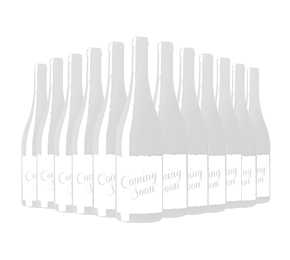Chat with Vinny
Prosecco and Champagne are two of the world’s most famous sparkling wines. But apart from the bubbles, what do they have in common? And how do they differ from each other? Read on to find out more …
The facts at a glance
Here are the key differences between Prosecco and Champagne
Country Champagne is from France; Prosecco is from Italy.
Winemaking Champagne bubbles are born in bottles, Prosecco in tank.
Grapes Champagne: Chardonnay and Pinot Noir; Prosecco: Glera
Flavour Champagne: green apple and citrus with toasty complexity. Prosecco: fresh pear and peach flavours.
Ageing Champagne: can age for decades. Prosecco: drink young.

Getting started
Knowing your Moët from your Freixnet can seem a daunting task at first. But there are a few key – and easy – differences between Champagne and Prosecco that, once you know, will have you looking like a wine expert. Plus understanding the difference between Champagne and Prosecco can help you choose the best bottle for your occasion.
Telling one sparkling wine from the other is easier than you think – and that doesn’t just mean reading the label. Read on to discover the different regions, grapes, winemaking methods, and tastes behind this cheerful Italian fizz and the French classic.

Prosecco vs. Champagne – where they come from
To find the home of Prosecco, head to the Veneto region in northeast Italy. Here you’ll find specific Prosecco-producing regions, including the world-famous Conegliano Valdobbiadene Prosecco Superiore DOCG, and the ever-popular Prosecco DOC.
The native Glera grape thrives here thanks to the mild, sunny climate and unique soils – a mixture of limestone, clay, marl and marine sandstone – helping give Prosecco its unique fruity flavour and aroma.
Champagne comes only from the wine region with the same name in northeastern France. This region is renowned for its chalky limestone soils and cool climate, which preserves the natural acidity in the grapes used in the Champagne blend. This is what gives Champagne sparkling wine its racy, refreshing style and makes this bubbly so food-friendly.
Prosecco vs. Champagne – how they are made
Although both wines are sparkling due to the carbon dioxide released during fermentation, Prosecco and Champagne are made using different methods.
Put very simply, Champagne is made in a bottle whereas Prosecco is made in a tank. But, of course, in reality, it’s a bit more involved than that …
Champagne lends its name to the more elaborate méthode champenoise (sometimes called the “traditional method”)– a more labour-intensive method of producing sparkling wine. Here are the key steps:

After the grape juices have been fermented into wine, the winemaker adds a mixture of yeast and sugar to the wine in its bottle and seals it with a crown cap.
A secondary fermentation happens inside the bottle, where carbon dioxide is created and trapped, creating those iconic bubbles. The fizz also remains in contact with the yeast sediment (known as the ‘lees’), contributing to its complexity and flavour development as it ages.
Bottles are placed on a ‘riddling rack’ and rotated very, very gently so the lees collect in the neck of the bottle.
The sediment is removed – often by a process of freezing the wine in the neck of the bottle and opening the bottle to eject it under pressure.
The final touch by the cellar master is the addition of the ‘dosage’. A specific house blend of sugar and reserve wine to make the Champagne perfect.
Champagne can benefit from a few years in the cellar, and many are aged before being sold. In the right conditions, you can keep ageing them for up to a decade after you bring them home.
Prosecco winemakers use the Charmat, or tank, method to produce this Italian sparkling wine. Here are the key steps:
After the grape juices have been fermented into wine, a secondary fermentation happens in a large tank or series of tanks.
This sparkling wine is then filtered and bottled without ageing.
The tank method helps preserve the vibrant characteristics of the aromatic Glera grape. There’s some yeast contact, but nowhere near as much as when making Champagne, so you won’t encounter the same toasted bread or brioche hints in tank-method wines. This method is typically faster and less labour-intensive, which is one reason Prosecco is generally cheaper than Champagne.
Prosecco vs. Champagne – grapes
Champagne and Prosecco are created from different grape varieties, affecting the wines taste, aroma, and style.
Champagne is made from a blend of Chardonnay, Pinot Noir, and Pinot Meunier, each bringing its unique characteristics to the final blend. Some are made exclusively from Chardonnay grapes (known as blanc de blancs), while others that use Pinot Noir, Pinot Meunier, or a combo of the two, are called blanc de noirs. Although most Champagnes are white, rosé ones are a popular alternative.
Prosecco is made from aromatic Glera grapes, which have intense fruit flavours and floral aromas. A rosé version of this beloved Italian sparkling wine has recently been approved, so you can now encounter a pink Prosecco made with up to 15% Pinot Noir blended with Glera.
Prosecco vs. Champagne – flavour profile
Prosecco is all about fresh and fruity flavours, lifted with light blossom aromas. Expect juicy white peach, pear, green apple, lemon, and fragrant white flowers such as honeysuckle. This sparkling wine comes in various styles, from dry to sweet, although most lean towards the sweeter end of the scale.
Prosecco’s bright and fresh flavours make it a no-brainer to pair with spicy and aromatic Asian dishes such as butter chicken and pad Thai. If your menu is closer to home, Prosecco is a classic pairing with prosciutto-wrapped figs, classic Margherita pizzas, seafood such as salmon and prawns, and mild, soft cheeses such as burrata.
You can forget about leaving Prosecco to age – drinking sparkling wine within a year of bottling is best to enjoy its fresh and fruity flavour.

Champagne’s flavour profile leans toward apple, citrus and pear with sweet and warming hints of toasted brioche and biscuit. It’s a famously complex wine with more layers than you would typically find in a glass of Prosecco.
Champagne is sensational with lobster, crab, scallops and sushi, but it’s also perfect with poultry and anything cheesy or creamy. Its natural acidity cuts through rich sauces, helping to refresh your taste buds between bites. Foie gras, caviar and oysters are classic Champagne pairings if you want to indulge, but there’s no need to keep it high-brow. Fish and chips, mac ’n’ cheese, popcorn, even takeaway pizza are some of our favourite food pairings with this iconic fizz.
If pink is your colour, both rosé Champagne and rosé Prosecco are bursting with vibrant red berry flavours, with the latter most commonly made in an off-dry style.
Prosecco vs. Champagne – how to serve
Prosecco and Champagne are great for any occasion, whether a casual brunch, wedding, birthday party or just a late afternoon treat.
The recommended serving temp for Prosecco is slightly lower than Champagne – between 4–7°FC versus 7–10°F. A warmer temperature allows the complexities of Champagne to shine through, while a cooler Prosecco temperature lifts its more delicate flavours.
The best glassware for serving Prosecco are tulip glasses or a standard white wine glass, such as a Riesling glass. The shape helps direct those gorgeous floral and fruit aromas straight to your nose – aromas that can get lost when serving the wine in flutes. It’s the same deal when it comes to serving Champagne.
There’s nothing wrong with serving either type of bubbly in flutes, though. The long, thin design of flutes helps preserve the streams of bubbles fizzing their way up through the wine.
Looking to elevate your glass of Champagne even further? Read our guide to Champagne Cocktails you can make in minutes.
Shop our full range of sparkling wines.
About the author
Chris Larkin
A seasoned copywriter with over two decades experience, Chris has been part of the team since 2021. At Laithwaites HQ, you’ll find him either working on our latest catalogue or creating informative content for our website. Qualified to WSET Level 3 Wine, Chris is as geeky about wine as he is about copywriting. But when it comes to choosing a special bottle, he is a traditionalist, and loves a good Bordeaux or Mâcon Chardonnay.

